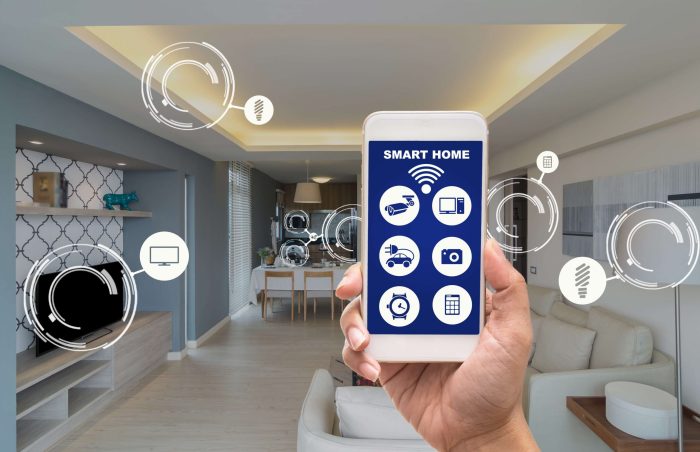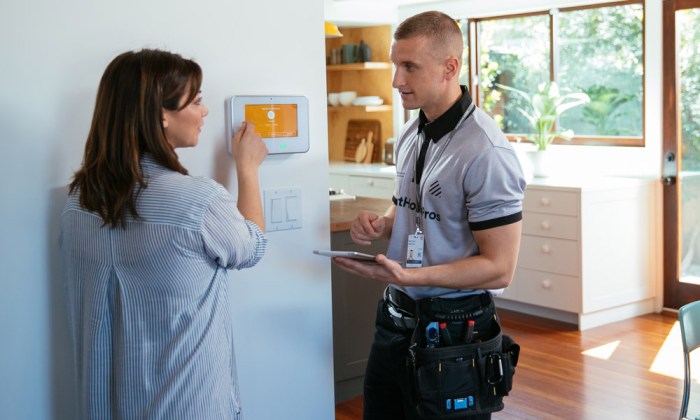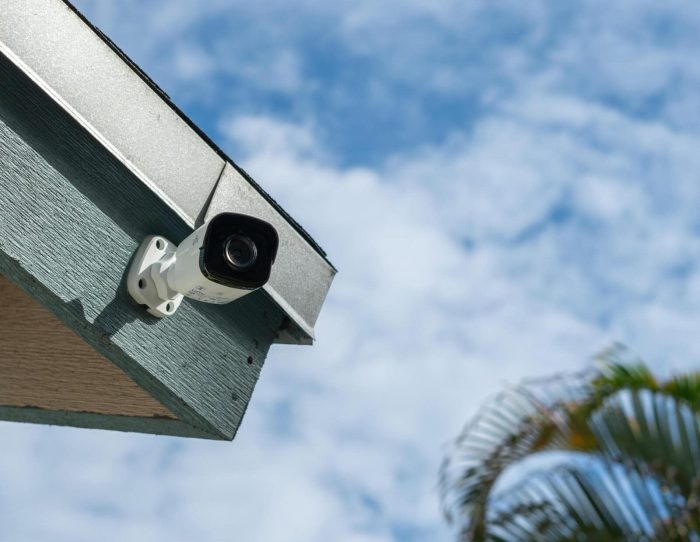Smart Security System Installation: Ensuring Safety and Peace of Mind
Smart security system installation is more than just a trend - it's a crucial step towards safeguarding your home or office. In this comprehensive guide, we delve into the world of smart security systems, exploring their benefits, installation process, and integration with other smart home features.
Get ready to embark on a journey towards enhanced safety and peace of mind!
Importance of Smart Security Systems
Smart security systems offer a wide range of benefits for both residential and commercial properties. These systems not only provide peace of mind but also enhance the overall safety and security of your home or office.
Enhanced Safety Features
- 24/7 Monitoring: Smart security systems come equipped with surveillance cameras and sensors that provide round-the-clock monitoring of your property.
- Instant Alerts: Receive real-time alerts on your smartphone or other devices in case of any suspicious activity or security breach.
- Remote Access: Control and monitor your security system from anywhere in the world using a mobile app, giving you the flexibility to check in on your property at any time.
Advanced Technology Integration
- Integration with Smart Home Devices: Smart security systems can be integrated with other smart home devices such as smart locks, lights, and thermostats for added convenience and control.
- Artificial Intelligence: Some smart security systems use AI technology to learn your activity patterns and detect anomalies, providing a more personalized security experience.
- Cloud Storage: Store security footage and data securely in the cloud, ensuring that you always have access to important information even if the physical system is compromised.
Planning for Installation

When preparing to install a smart security system, it is crucial to plan ahead to ensure a smooth and effective process. This involves considering various factors and conducting a security assessment to identify specific needs and vulnerabilities.
Step-by-Step Guide for Planning
- Assess your security needs: Determine what areas of your property need protection and what type of security features are necessary.
- Research smart security system options: Explore different systems available in the market and choose one that aligns with your needs and budget.
- Consider the layout of your property: Evaluate the layout of your property to determine the best locations for cameras, sensors, and other components.
- Create a detailed plan: Develop a comprehensive plan that Artikels where each component will be installed and how they will work together.
- Consult with a professional: Seek advice from a security expert to ensure that your plan is thorough and effective.
- Purchase necessary equipment: Acquire all the required components for your smart security system installation.
- Schedule installation: Set a date for the installation and make sure you have enough time allocated for the process.
Factors to Consider Before Installation
- Property size: The size of your property will determine the number of cameras and sensors needed for adequate coverage.
- Connectivity: Ensure that your property has a reliable internet connection to support the smart security system's functionality.
- Budget: Determine how much you are willing to invest in a smart security system and choose one that fits within your budget.
- User-friendly interface: Select a system that is easy to use and understand, especially if you are not tech-savvy.
- Integration with other smart devices: If you have other smart devices in your home, consider a security system that can integrate with them for added convenience.
It is essential to conduct a security assessment before installing a smart security system to identify weak points in your property's security and tailor the system to address those vulnerabilities.
Selecting the Right System
When it comes to choosing the right smart security system for your home, there are several factors to consider. From the different types available in the market to their compatibility with other smart home devices, it's important to make an informed decision based on your specific security needs.
Types of Smart Security Systems
- Wireless Security Systems: These systems are easy to install and can be controlled remotely through a smartphone or tablet.
- Hardwired Security Systems: These systems are more reliable but require professional installation.
- DIY Security Systems: These systems are affordable and can be easily installed by homeowners.
Compatibility with Other Smart Home Devices
- Make sure the smart security system you choose is compatible with other smart home devices you already own, such as smart lights, thermostats, and locks.
- Look for systems that can be integrated with popular smart home platforms like Amazon Alexa, Google Assistant, or Apple HomeKit.
Choosing Based on Security Needs
- Assess your specific security needs, such as the size of your home, the level of protection required, and any specific areas of vulnerability.
- Consider features like motion detection, video surveillance, and smart alerts to determine which system aligns best with your security requirements.
- Read reviews and compare different systems to find one that offers the right balance of features, price, and ease of use.
Installation Process

When it comes to installing a smart security system, it is essential to follow a systematic approach to ensure proper functionality and effectiveness. Below, we detail the installation process and provide tips for both DIY and professional installation.
DIY Installation vs. Professional Installation
Before starting the installation process, it's crucial to determine whether you want to go the DIY route or hire a professional to set up your smart security system. Here are some considerations for each option:
- DIY Installation:
- Pros: Cost-effective, flexibility in scheduling, and a sense of accomplishment.
- Cons: Requires technical knowledge, may void warranties if done incorrectly, and potential for errors.
- Professional Installation:
- Pros: Expertise and experience, ensures proper setup, and professional advice on system usage.
- Cons: Higher cost, scheduling coordination, and reliance on external help.
Common Challenges and Solutions
During the installation process, you may encounter some common challenges. Here are tips on how to overcome them:
- Placement Issues:
- Ensure cameras cover critical areas and have a clear line of sight.
- Adjust camera angles and heights for optimal coverage.
- Connectivity Problems:
- Check Wi-Fi signal strength in areas where devices will be installed.
- Consider using Wi-Fi extenders or mesh networks for better coverage.
- Power Supply Concerns:
- Install cameras near power outlets or consider battery-powered options.
- Use surge protectors to safeguard devices from power surges.
- System Integration Challenges:
- Ensure compatibility between devices and the central hub/controller.
- Follow manufacturer guidelines for linking devices for a seamless system.
Integrating with Smart Home Features
Smart security systems can seamlessly integrate with other smart home features, creating a comprehensive and connected ecosystem within your home. By integrating these systems, you can enjoy a range of benefits that enhance both the convenience and security of your living space.
Benefits of Integration
Integrating your smart security system with other smart home features allows for centralized control and automation. This means that you can manage and monitor all aspects of your home security, lighting, heating, and entertainment systems from a single interface, such as a smartphone app or a smart home hub.
This level of integration enhances the overall efficiency and functionality of your home, providing you with peace of mind and convenience.
- Automated Lighting: You can set up your smart security system to work in tandem with your smart lighting system. For example, motion sensors from your security system can trigger lights to turn on, deterring potential intruders.
- Smart Locks: Integrating smart locks with your security system allows you to remotely control access to your home. You can lock and unlock doors from your smartphone, receive notifications when someone enters or exits, and even create temporary access codes for guests.
- Thermostat Control: By integrating your security system with a smart thermostat, you can adjust the temperature in your home based on your security settings. For instance, when you arm your security system to away mode, the thermostat can automatically adjust to an energy-saving setting.
Integrating smart home features with your security system not only enhances convenience but also provides a more robust and interconnected approach to home security.
Maintenance and Troubleshooting
When it comes to smart security systems, regular maintenance is essential to ensure optimal performance and reliability. Additionally, having troubleshooting knowledge can help in addressing common issues that may arise. Let's explore the maintenance requirements and troubleshooting tips for smart security systems.
Maintenance Requirements
Maintaining a smart security system involves a few key tasks to keep it functioning properly:
- Regularly check and replace batteries in sensors and cameras.
- Clean cameras and sensors to ensure clear visibility and detection.
- Test alarms and notifications to verify they are working correctly.
Troubleshooting Tips
Here are some common issues that may occur with smart security systems and how to troubleshoot them:
- If sensors are not detecting motion, check for any obstructions or interference.
- If cameras are blurry or not recording properly, clean the lenses and adjust the angle for better coverage.
- If the system is not connecting to the app or Wi-Fi network, restart the devices and ensure proper configuration.
Importance of Regular Updates
Regularly updating the software and firmware of your smart security system is crucial for optimal performance and security. These updates often include bug fixes, new features, and security patches that help in safeguarding your system against potential vulnerabilities. Make sure to check for updates regularly and install them promptly to ensure your system is up to date.
Epilogue
From understanding the importance of smart security systems to mastering their installation and maintenance, this guide equips you with the knowledge needed to make informed decisions about your security needs. Stay ahead of potential threats and enjoy the convenience of a fully integrated smart home security system.
Take control of your safety today!
Common Queries
What are the key benefits of installing a smart security system?
Smart security systems offer remote monitoring, real-time alerts, and integration with other smart devices for enhanced security and convenience.
How do I choose the right smart security system for my specific needs?
Consider factors like property size, desired features, and budget when selecting a smart security system to meet your unique security requirements.
Is professional installation necessary for smart security systems?
While DIY installation is possible, professional installation ensures optimal setup and integration, especially for complex systems.
What maintenance tasks are required for smart security systems?
Regular system updates, battery replacements, and sensor checks are essential for maintaining the effectiveness of smart security systems.
Can smart security systems integrate with other smart home features?
Yes, smart security systems can seamlessly integrate with smart lighting, thermostats, and cameras to create a comprehensive smart home security setup.




